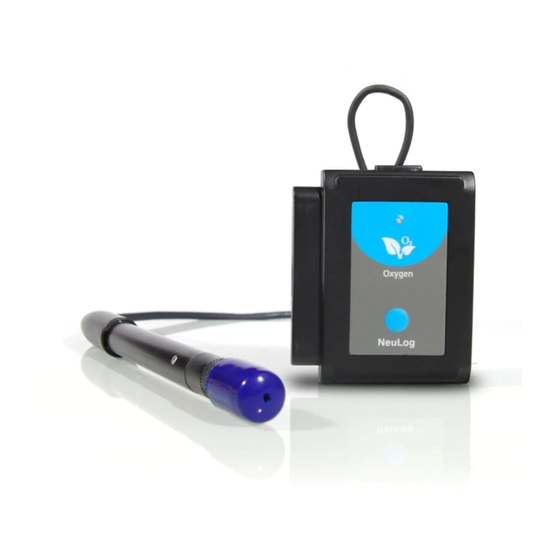
Advertisement
NeuLog RF communication module
NUL-205
The RF communication module allows for remote operation of all NeuLog sensors.
The RF modules communicate wirelessly with one another – acting similarly to a very
long cable between the sensor and a smart device to stream data to the NeuLog
software in real time.
The working range of the RF module is up to 20 meters (65 feet) which adds a large
amount of flexibility to truly customize your experiment to your specific needs.
Smart devices do not need to have Bluetooth or Wi-Fi capabilities; everything required
is built directly into the RF communication module. The RF modules will work with any
smart device which has a USB port to connect the USB module into.
Using NeuLog RF modules:
As with all NeuLog devices, setting up the RF communication modules is very quick
and easy. It is important however to follow these few steps to properly collect data.
Materials needed:
2 RF communication modules (RF-200)
USB module (USB-200)
Battery module (BAT-200)
Any NeuLog sensor
Setting the RF ID number:
For your RF modules to properly work they must be set to the same ID channel
(paired) so they can speak with one another directly. This is done very easily using
the Neulog software. Keep in mind, if you have multiple pairs of RF modules in the
same area they must be set to different RF ID values (1 through 9) to prevent
interference.
1.
Connect the USB module into your smart device using the included
USB to micro-USB cable.
2.
Connect both of the RF modules into the USB module.
3.
Open the NeuLog software.
Click on the "NeuLog Tools" button located at the top of the screen.
4.
NEULOG RADIO FREQUENCY COMMUNICATION MODULE GUIDE
Connecting sensors using RF modules:
Once you have paired two RF communication modules to the same RF ID number (1
through 9) you can begin connecting Neulog modules and sensors together. Again it
may be easiest to imagine the RF communication modules as a long cable between
the sensor and the USB module.
1.
2.
3.
4.
5.
6.
For reference, the image below demonstrates roughly how your setup should appear.
In the dropdown menu click on "Set RF ID"
5.
6.
Select an ID number (1 through 9) and make note of your selection.
7.
Both of your RF communication modules are now set to your chosen
value.
Note: This setup is not required prior to every use as long as you
keep modules with similar ID's paired for experimentation.
Connect the USB module into a smart device using the included USB to
mini USB cable.
Connect one of the paired RF modules to the left side of the USB module.
Separately, connect the second RF module into the left side of a charged
battery module. Note: press and hold the button on the front of the battery
module: if a light comes on, than the battery has sufficient power. If no light
comes on, than you must charge the battery some more.
Connect whichever sensors you wish to use into the left side of the second
RF module (which is connected into the battery). Note: You can conduct
experiments with up to 5 NeuLog sensors using the RF modules.
Open the NeuLog software, it will automatically search for sensors.
Once your sensors are detected you are ready to begin collecting data
wirelessly!
Advertisement
Table of Contents

Summary of Contents for NeuLog NUL-205
- Page 1 (paired) so they can speak with one another directly. This is done very easily using the Neulog software. Keep in mind, if you have multiple pairs of RF modules in the same area they must be set to different RF ID values (1 through 9) to prevent interference.
- Page 2 Maximum Range 20 meters in open air. Maintenance and storage: Never submerge the NeuLog plastic body in any liquid. After use, gently wipe away any foreign material from the RF module Store in a box at room temperature out of direct sunlight.







Need help?
Do you have a question about the NUL-205 and is the answer not in the manual?
Questions and answers